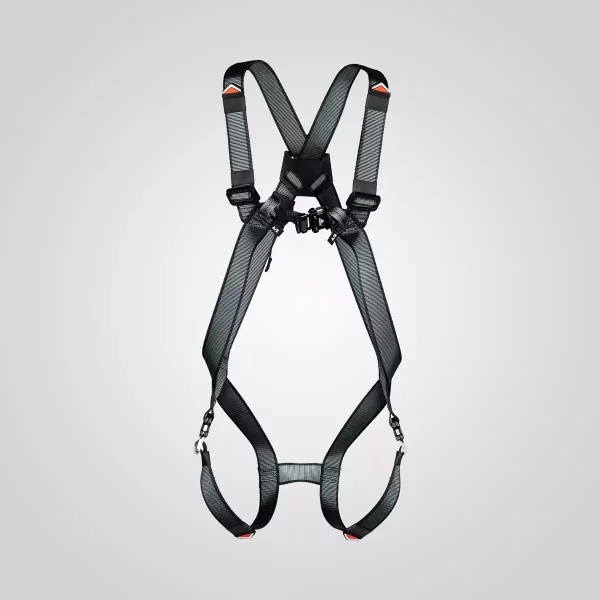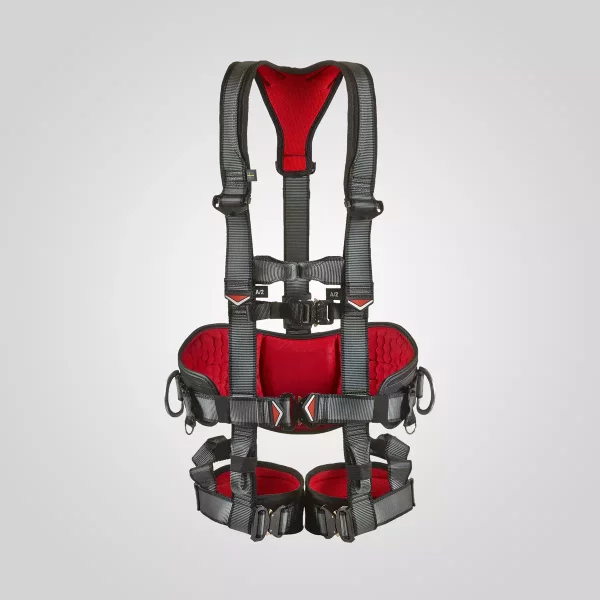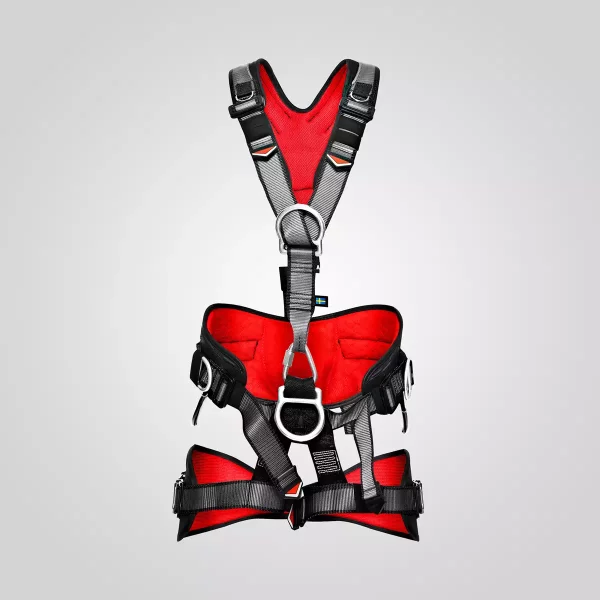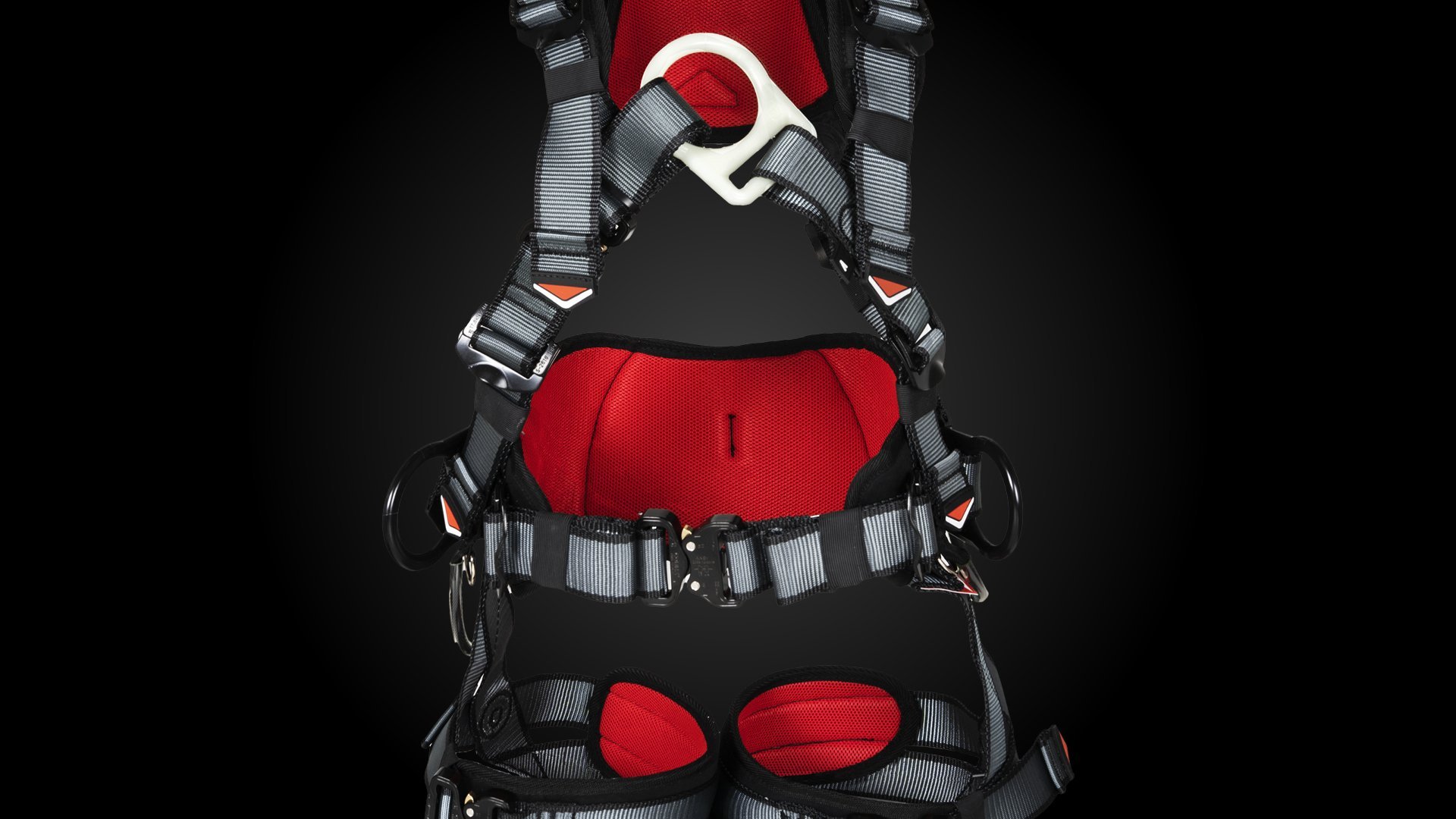In this guide, we will explain how a body harness is defined, which different designs there are and which constructions and functions are adapted and developed for various industries and working methods.
There are many different types of harnesses, and it can be difficult to know what kind of harness is suitable for your type of work. In this guide, we will explain how a body harness is defined, which different designs there are and which constructions and functions are adapted and developed for various industries and working methods.
DIFFERENT TYPES OF CONSTRUCTIONS
When we talk about how a harness is constructed, familiar concepts are Y, H, or W harness.
The advantage of a Y-construction is that the force is concentrated to the centre, (the chest), which means that in a seat harness when working in the rope, there is increased freedom of movement and comfort. The disadvantage of the design is that one often gets to step into the harness.
The strength of the H-harness is that it is easy to adjust and take on, while the W-design gives better ergonomics and distributes the power evenly at more extensive and more strenuous movements.

HARNESSES FOR FALL PROTECTION
The simplest type of full body harness is the one used for fall protection. These harnesses are certified and tested against the European standard, EN 361. The height worker must be able to use the harness when working on a stable surface but do not actively or continuously climb in ladder or are required to perform a task from a vertical position or hanging over an edge. The harness is either a 1-point harness or a 2-point harness.
At Cresto, our fall protection harnesses have a connection point on the chest and one on the back. The connection points are used to attach the line which is the connection between you and the anchor point. These harnesses are mainly recommended and used for more natural roofing, mobile/fixed platforms and scaffolding where you want to prevent or catch a fall over the edge. Harnesses within this category are usually certified for 100 kg, but now it has become more familiar with up to 140 kg user weight.

HARNESSES FOR POSITIONING - WITH BELT
This category of harnesses is very similar to the fall protection harnesses. To be able to use the harnesses for positioning/support during vertical climbing in, for example, ladders or other vertical structures, a belt has been added. In vertical work, a support line is connected through the belt and to the ladder/structure in this way one can work comfortably with two hands without having to worry about falls.
These types of harnesses are tested and certified against EN 361 and an additional standard called EN358. It is crucial that this information is available on the harness. Modern harnesses such as our Fusion range are also certified for positioning without wearing the original belt. These are marked with CNB/P11,043 and can be used when positioning. The reason for removing the belt is to get better freedom of movement, ergonomics and comfort during the work shift. These harnesses are 3- or 4-point harnesses depending on the number of connection points on the harness.

HARNESSES FOR SUSPENSION
Also called seat harnesses are harnesses with a sitting function used, e.g. for work suspended in ropes. The leg straps are connected with the belt to get the feeling of sitting in a "chair". Site seats are tested and certified against EN361, EN358 and EN813. The harnesses are 4- or 5-point harnesses. Many other accessories can make the work more comfortable for those who work hanging on ropes for a long time. Check out components for Rope Access here.
Are you interested in a Rope Access Course?

